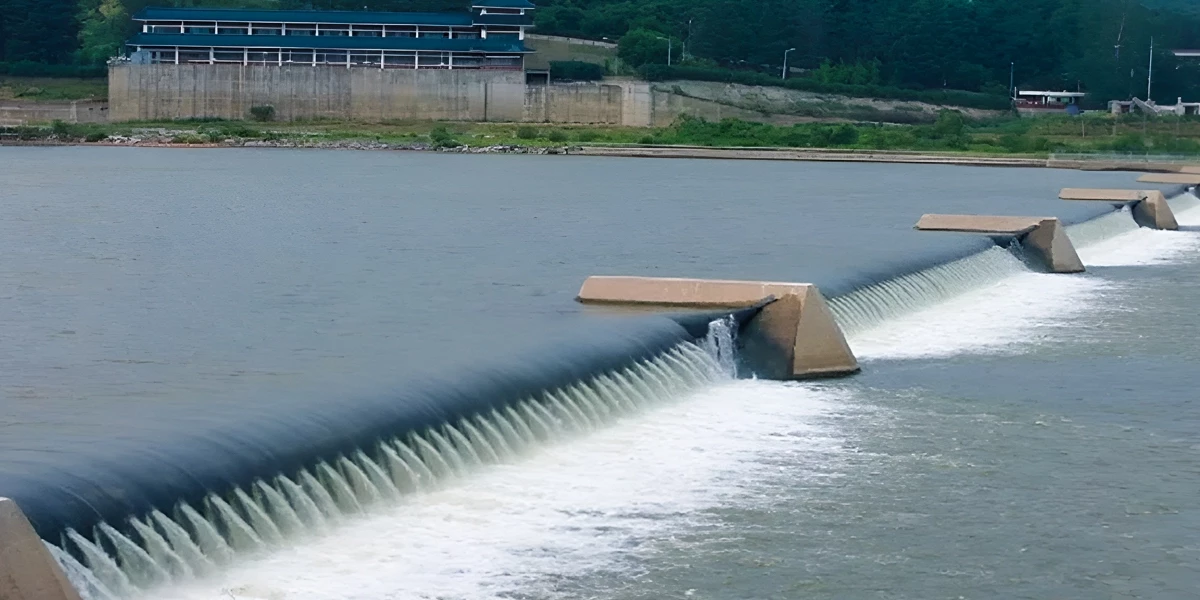

India has a wide variety in terms of the terrain and seasonal variation of rainfall distribution and experiences significant challenges relating to the conservation and management of water. In the midst of a growing concern regarding sustainable water infrastructure, the rubber dams in India are increasingly getting notoriety due to their ability to adapt effectively, efficiency, and long terms gains. Many political policies have come into the limelight in the recent years, to promote construction processing of rubber dams with an objective to support for the efficient irrigation, flood control and improved mechanism to conserve the country water.
YOOIL ENVIROTECH, one of the pioneers in eco-friendly hydraulic structures is doing a substantial job towards the development of rubber dam technology in the country. As the rubber dam construction has strong influences of governmental support and distinguishing advantages, the rubber dam construction quickly increases alongside with its vibrant future prospects for sustainable water resource management.
Rubber dam is an inflatable, flexible dam structure which is either composed of synthetic rubber or composite material and is installed over a river or stream. The resulting structures can use air or water to hold water and, alternatively, deflated to let normal water flow. Rubber dams are particularly advantageous in rubber dam irrigation, conservation of water within cities, and for upholding ecological balance.
It is imperative to know rubber dam components in order to appreciate its versatility. A standard rubber dam includes:
These aspects make rubber dams efficient, easy to maintain, reliable, even under harsh conditions.
The following are the Rubber dam advantages over traditional structures such as concrete weirs or gates:
Recognizing the multifaceted benefits of rubber dams, the Indian government has been proactive in promoting their construction. Here are the key government policies and schemes that support rubber dam construction in India:
The PMKSY aims to improve irrigation coverage and water efficiency. Under the “More Crop Per Drop” initiative, the government encourages the adoption of innovative water storage and distribution methods — including rubber dam irrigation. The scheme provides subsidies and financial assistance for the construction of water conservation structures such as rubber dams.
Operated by NABARD, RIDF provides funds to state governments for rural infrastructure development, including minor irrigation projects. Rubber dam construction qualifies under this initiative, especially in regions where sustainable and low-cost water storage is essential.
Several state governments have incorporated rubber dam technology into their water resource planning:
Launched by the Ministry of Jal Shakti, this campaign emphasizes water conservation and rainwater harvesting. Rubber dams are being promoted as a solution for both rural and urban water storage, playing a critical role in drought-prone regions.
Under the urban renewal mission, cities are adopting smart water management systems. Rubber dams in India are now being considered for urban riverfront beautification, water level management, and recreational purposes, further supported by central government incentives.
YOOIL ENVIROTECH, a global leader in hydraulic and water management solutions, is at the forefront of promoting the rubber dam in India. With decades of expertise and a commitment to sustainable development, Yooil’s rubber dam systems are tailor-made for India’s varied geographical and climatic conditions.
Yooil’s involvement goes beyond construction — the company offers end-to-end services including feasibility studies, design, installation, operation, and maintenance of rubber dams. Their smart control systems and eco-friendly materials ensure long-lasting performance and minimal environmental footprint.
Key Projects by Yooil Envirotech in India:
India’s focus on sustainable infrastructure and climate-resilient solutions will further boost the demand for rubber dam construction. With enhanced funding, policy support, and technological advancement, the following trends are expected:
As water security becomes a national priority, the role of the rubber dam in India is growing rapidly. Supported by progressive government policies, public-private partnerships, and innovative solutions from companies like YOOIL ENVIROTECH, rubber dam construction is poised to transform India’s water management landscape.
By integrating advanced technology, sustainable design, and strategic policy alignment, rubber dams offer a promising path toward efficient irrigation, flood control, and ecological balance. For stakeholders across sectors — from agriculture to urban development — embracing this next-generation solution is not just beneficial, but essential for a water-secure future.
Interested in building a rubber dam project? Connect with YOOIL ENVIROTECH — your trusted partner in sustainable water solutions.
